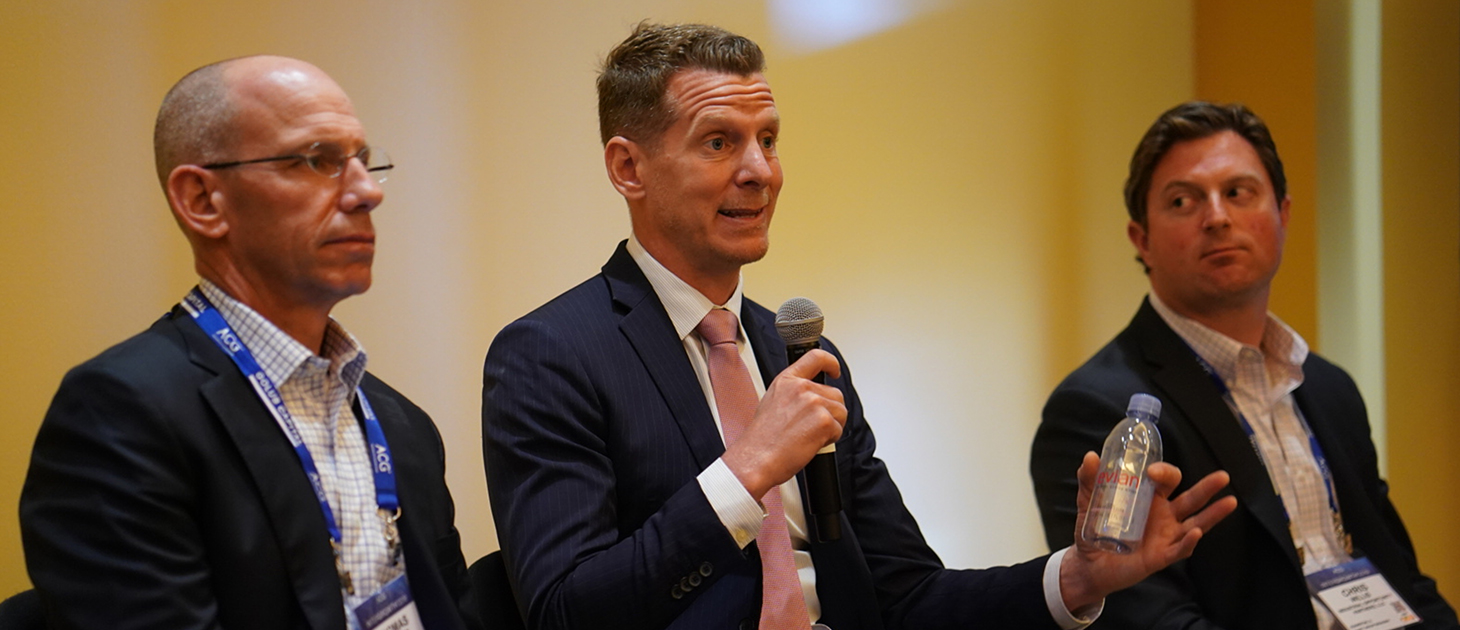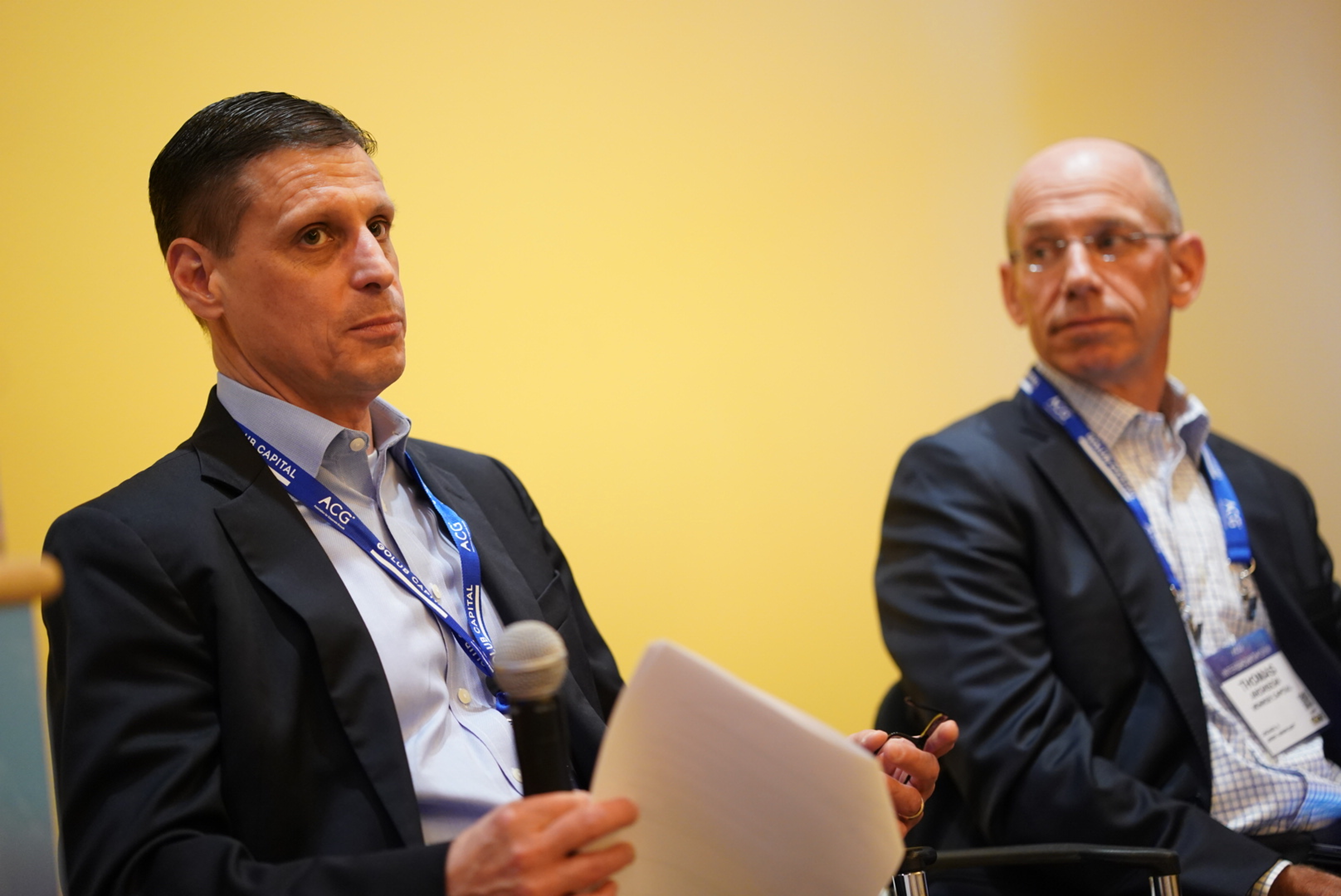What Could Douse M&A’s Hot Streak?
The current trend of robust M&A activity looks likely to continue into the foreseeable future, but which potential disruptors could cause organizations to reassess their acquisition strategies?

Economic trends large and small continue to drive robust mergers and acquisition activity, but are storm clouds gathering on the horizon?
During a breakout session at ACG’s annual conference, InterGrowth®, panelists discussed the impact of real and hypothetical disruptors facing M&A. Sponsored by Baker Tilly, State of M&A: Impact of Potential Disruptors on Market Activity in 2019 and Beyond explored the possibility of a recession, stock market volatility, tariffs, tax reform and political uncertainty.
Regardless of strong GDP growth at 3.2% during the first quarter of 2019, the panelists had mixed feelings on the possibility of a recession occurring in the near future.
Most of the panel agreed they were concerned more with the individual risks facing companies in their portfolio, rather than larger economic trends impacting them in a way that could forecast a recession in the near term.
For that reason, Partner and Head of Originations at Monroe Capital Tom Aronson determined the nearest probably slowdown will be in mid-2020; though the nearest time for a potential slow down and that recent events postpone a slowdown even further. “Overall, things are looking pretty good,” he said.
Aronson cited the Federal Reserve pausing its interest hike and the overall healthy global economy as reasons to believe in continued growth.
“That’s not to say we’re sticking our heads in the sand,” said Chris Willis, a director at Industrial Opportunity Partners. He continued, stating there are many indicators that produce mixed signals.
One of the biggest risks to future broader economic performance has to do with tariffs.
Late last week and over the weekend, President Donald Trump threatened to escalate the trade war with China as talks began to stall. The president said if China did not come to an agreement soon, he would increase duties on around $200 billion of imported goods from 10% to 20% this Friday, the panelists said.
Previous tariffs have been something of a mixed blessing, and the new ones proposed by Trump will do little to help solidify certainty in the market, Willis said.
For Industrial Opportunity Partners, which is heavily involved in manufacturing, its companies are being pulled in opposing directions by the current tariff regime. Some companies in its portfolio, such as metal processors that consume steel and aluminum were unable to pass along price increases resulting from tariffs. However, the companies that could, including those that supply metal products domestically, are benefiting immensely.
Future tariff hikes could do the same: Providing an opportunity for some while taking it away from others.
“It creates this noise in the earnings and it makes it hard for buyers to determine prices,” Willis said.
News of the tariffs has added more uncertainty in an already volatile public equities market, but some on the panel didn’t put much stock in it.

“We don’t spend time following the stock market,” Willis said. “It’s just not something we talk about, it doesn’t drive our business decisions. I suppose if there was a sudden, deep correction—like a crash—folks would take a pause.”
Aronson agreed but said it would matter if a major market correction changes consumer sentiment. “If that’s going to make its way through businesses that were buying or financing, then certainly that would have an impact,” he said.
But in that case, reduced confidence in M&A would be an event-driven item as opposed to a systemic one, moderator Michael Milani, an executive managing director and principal at Baker Tilly said.
A disruptor with real staying power would be volatility not in the stock market, but in politics, argued Tony Nitti, a partner at RubinBrown.
While Nitti explained the various ways tax reform provides a silver lining, even counteracting the disruptions facing the middle-market M&A, he did not downplay the risks. “We are in the most tenuous tax environment that we’ve been in the last century,” he said and added the Tax Cut and Jobs Act passed in 2017, which reduced the corporate tax rate from 35% to 21% was the most meaningful tax reform in 31 years.
“That’s obviously extremely meaningful,” said Natti.
However, because the law was authored and passed largely with Republican backing, it puts it at risk of being overturned if Democrats win back the White House and the Senate in 2020.
“We could be dealing with dramatically different tax law on the corporate side,” Natti said.
But it would take a lot to take the wind out of the sails, Milani said. “It would be very difficult, statistically, to be in recession between now and end of year, given where we are in the first quarter,” he said.
In order for a recession to occur, there would have to be two consecutive negative growth quarters, and given the systemic changes in the market because of tax reform, a recession and other risks are minor, especially as productivity rises and unemployment falls.
Additionally, due to tax reform injection of capital into M&A because of tax reform has flooded into venture capital. “And an incredible number of startups, that typically leads to ideal M&A activity,” Milani said.
As long as capital remains available, few risks exist, according to Aronson.
“Credit is alive and strong and competitive,” he said. “We’re all fighting for deals and there’s a lot of deals out there. Right now, there’s no tightening. We’re all able to raise money. As we have money to put out, the guys on the equity side are buying companies and we’re happy for that.”
But Aronson tempered his optimism: “When [a slowdown] happens, it will happen quick, fast and furious.”

Benjamin Glick is ACG Global’s marketing and communications associate.


